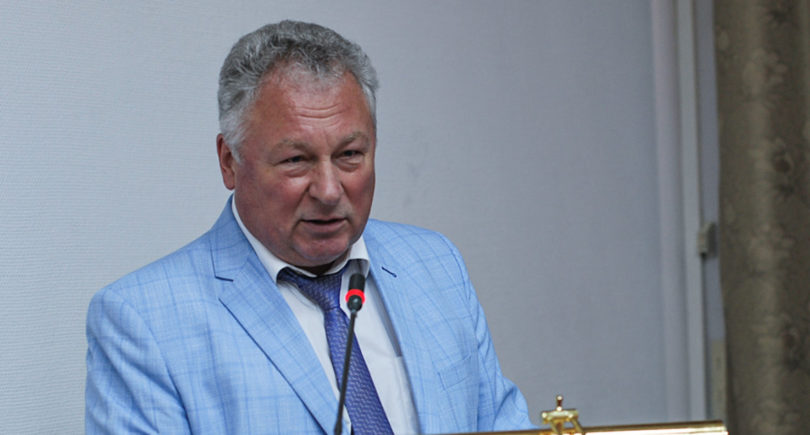
The steel sector of Ukraine will be among the most affected by the imposition of the CBA
From 2023, Ukrainian producers will face a new barrier to access the EU market, a carbon border adjustment mechanism (CBA). This is a very controversial instrument, declared to achieve good goals, though it might have some negative implications. No one in the European Union, or even more so in Ukraine, fully understands their scale. Meanwhile, Ukraine’s steel sector will be among the most affected by the CBA.
The CBA potentially covers steel exports from Ukraine worth €2.5 billion. The dependence of the domestic industry on the EU market is high. One can even call it excessive. Paradoxically, steelmaking companies sell more in the EU market than domestically. 26% of all marketable products are supplied to the EU, and 23% to the Ukrainian market. Therefore, any changes in the EU policy will seriously affect domestic manufacturers.
Ukraine’s dependence on the EU market is the highest compared to other exporting countries. For instance, Russia’s share of supplies to the EU is around 11% of the marketable output. In Asian countries, this figure does not exceed 4.5%. That is, by and large, they ‘do not care’ about the CBA. Turkey is highly dependent on the EU (18%), but 71% of the country’s steel output is EAF-produced, which is associated with three to four times less greenhouse gas emissions. In other words, Turkey can get an advantage as a result of the CBA imposition.
The structure of capacities in Ukraine fundamentally differs from that in Turkey. 95% of our steel production is based on the use of iron ore (BOF and OHF routes) compared to 64% in Russia. At the same time, the CBA would make a blind bit of difference to Asians. This means that due to the structure and sales markets of the domestic industry, the imposition of the CBA will inflict heavier losses on Ukraine at the national level than on our competitors.
Though there’s a reason behind the established industry structure. Access to iron ore gives Ukraine a competitive advantage, and its dependence on the EU market increased over the past 5–6 years as a result of Ukraine’s course towards European integration. EAF steelmakers and countries that trade less with the EU will benefit from the imposition of the CBA. Ukrainian manufacturers will consequently lose their advantages.
The size of possible losses depends on parameters of the CBA mechanism. Two main scenarios for CBAM application are being currently considered: the first one suggests allocation of free emission allowances for producers of imported products (Scenario 1), whereas the second scenario implies no free import quotas and abolishment of free quotas for EU producers (Scenario 2). So, scenario 2 assumes many times higher amounts of CBA fees and is the least acceptable for producers of imported products, in particular Ukrainian ones. For instance, CBA fee for imports of rolled products from Ukraine under Scenario 1 may amount to €30.4 per ton, and €100 per ton under Scenario 2.
As of now, it is difficult to forecast the likelihood of the implementation of Scenario 1 or Scenario 2. This is a very controversial issue in fact. The point is that the main idea of CBA is to avoid carbon leakage. Though the allocation of free allowances in due time was also aimed at carbon leakage prevention. In other words, there may be duplication of instruments. The alternative is therefore not that easy: either a milder, but illogical scenario, or a more reasonable, but tougher scenario for both importers and EU manufacturers, because their costs would also grow significantly.
According to a survey by GMK Center, losses of Ukraine’s steel sector from the imposition of the CBA are estimated at €100–200 million per annum, depending on scenario. Those losses would result from not only increase in costs, but also decrease in export volumes. Hence, because of the imposition of the CBA, manufacturers of long products will lose on costs to all EAF steelmakers — both local EU manufacturers and other exporters. As a result, it is possible to expect a 10% fall to around 110 thousand tons in exports of long products. Manufacturers of long products (AMKR, DMK, DMZ) will be the most affected, because EAF steelmakers hold a 85% share in the capacity structure of the EU long products segment. Supplies of pig iron may be stopped as well, which means an additional loss of around 0.5 million tons. Pig iron is the least marginal product, and additional fiscal burden on it will lead to losses.
Furthermore, the CBA will result in a decrease in the amount of investment resources and capital investments in the sector — minus €130 million per annum, or 12% against 2019. A decrease in investment resources will trigger a number of negative long-term implications:
- a chronic lag in investment, because Ukraine will suffer heavier losses than its competitors. This lag will only grow through the years. In the long run, Ukrainian manufacturers will lose in efficiency and their competitive position will deteriorate, which will lead to a further drop in export and production volumes;
- lack of investment resources is a pressing issue for steelmakers that are facing an increasing need for financing to meet the requirements for introducing BAT (best available techniques). Even the scale of the amounts required is difficult to assess. Unless manufacturers find a way to meet the modernization requirements, they will be forced to shut down;
- deteriorating financial results of steelmaking companies will reduce the possibility of raising debt capital and a return on investment projects, which will have a negative impact on investment processes in the sector;
- as a result of the CBA imposition, it will be more difficult for Ukrainian manufacturers to survive the crisis periods. The industry is cyclical, which means that it experiences crises from time to time. Such periods are attended with cash shortages and difficulties in servicing debts. This will also curb investment activity in the industry;
- deteriorating financial results of steelmaking companies will mean less opportunities for investment in social projects, a cut in funding for ESG activities, including environmental projects. In other words, the CBA will in fact not boost, but slow down decarbonization in the industry.
For the entire economy, losses from the CBA will amount to a €700 million decline in GDP per annum. These are the losses of the steel industry, as well as of other sectors of the supply chain and related industries. Hence, the government will incur losses of €140 million as a result of reduced tax revenues. Though the implications for the economy might be much more serious:
- the CBA format may trigger Scenario 3 that will be based on different rules of the game. For instance, free allowances for local manufacturers and no allowances for importers;
- if, as a result of Scenario 2, the EU does not revise the parameters of the European Emissions Trading System, this will mean a surge in demand, an unpredictable rise in emission prices and, consequently, an increase in CBA fees;
- the scales of negative implications of the CBA will increase every year, since the price for emission allowances tends to grow. The price for emission permits is projected to be €42 per ton in 2023. By 2030, it is expected to grow to €71, or 70% up. Yet losses inflicted on the economy will increase by more than 70%, because higher payments will mean an additional deterioration in price competitiveness. Therefore, there will be a further drop in export volumes and a further shortage of investments.
The CBA issue is critical for the steel sector and its long-term sustainability. The price for the economy would exceed 0.5% of GDP each year. These are just implications for the steel industry. But CBA also covers other products and other industries such as energy and chemicals. That means the losses would be much higher.
It is difficult, but still possible to reverse the situation due to:
- Ukraine’s active position in the discussion of the CBA format to exclude domestic products from the CBA. Compared to 1990, a cut in greenhouse gas emissions is Ukraine is more considerable than in the EU. Ukraine has committed to introduce an emissions trading system similar to that operating in the EU. Ukraine sets ambitious emission reduction targets similar to those of the EU;
- Access to finance from funds that will accumulate CBA proceeds. Otherwise, European manufacturers will be decarbonized at the expense of their Ukrainian competitors;
- A consistent environmental policy in Ukraine to encourage decarbonization (preferential loans, tax deductions, other methods of financing). The CBA in fact means applying the EU environmental regulation to foreign manufacturers, but only in terms of taxation. To avoid distortions, it is recommended to also introduce other EU policy measures in Ukraine.
Ukraine has little success in trade disputes so far. Though the CBA could be a major success for the Ministry of Economy and the Ministry of Foreign Affairs and a breakthrough in trade issues. I’d like to believe that we do care about ourselves. Otherwise, we are in for a long-term decline in industrial production. Producers will go green, but at the same time shrink.
The article was originally posted here.





